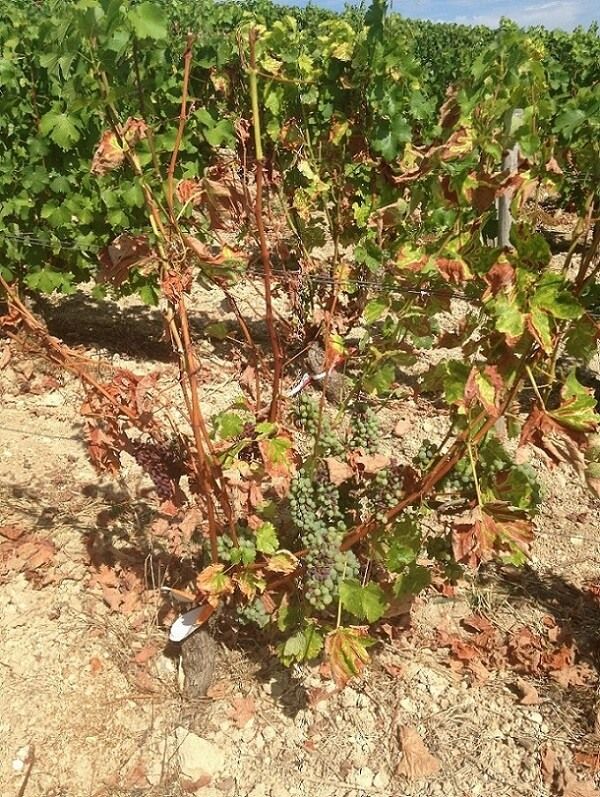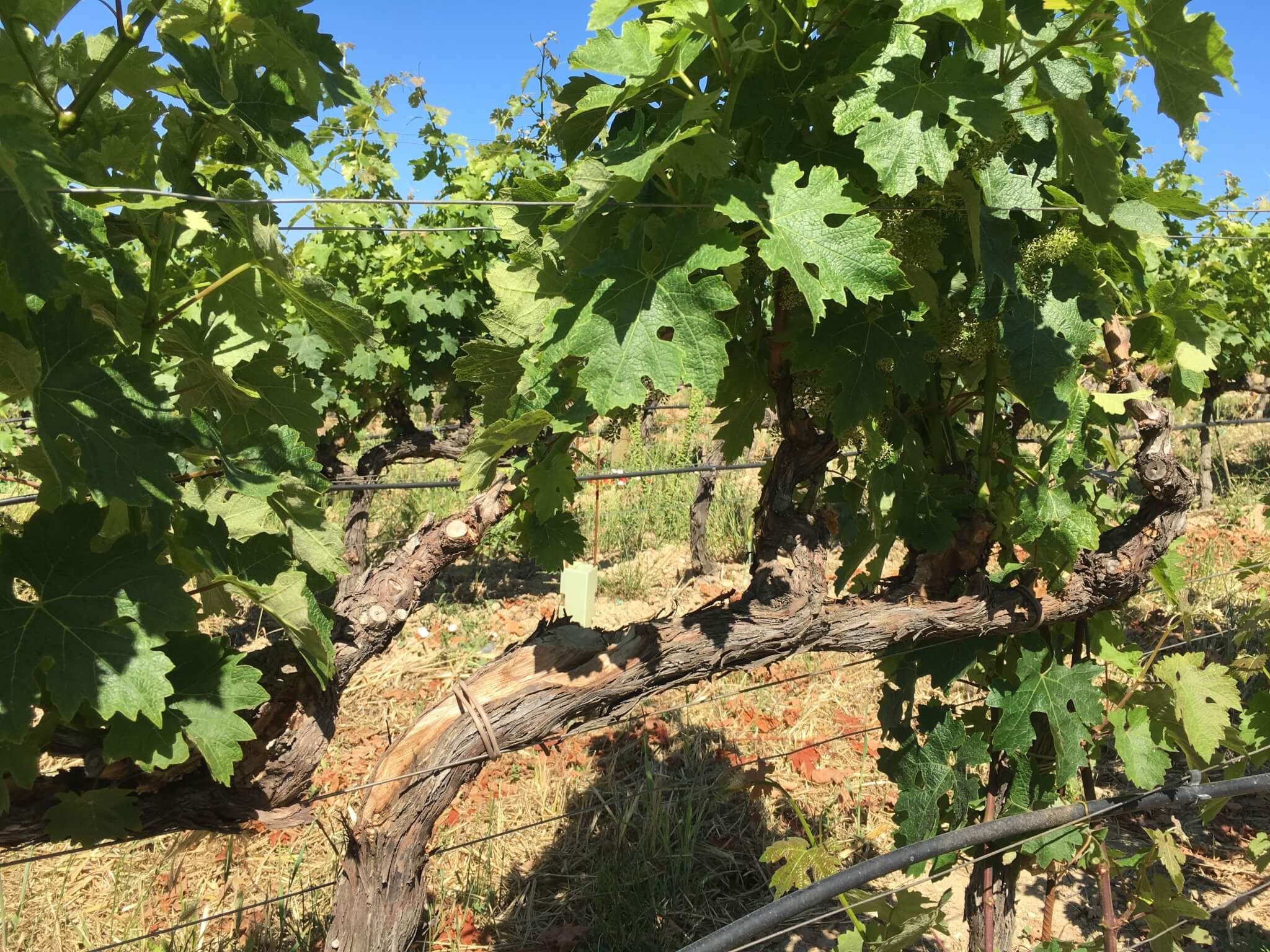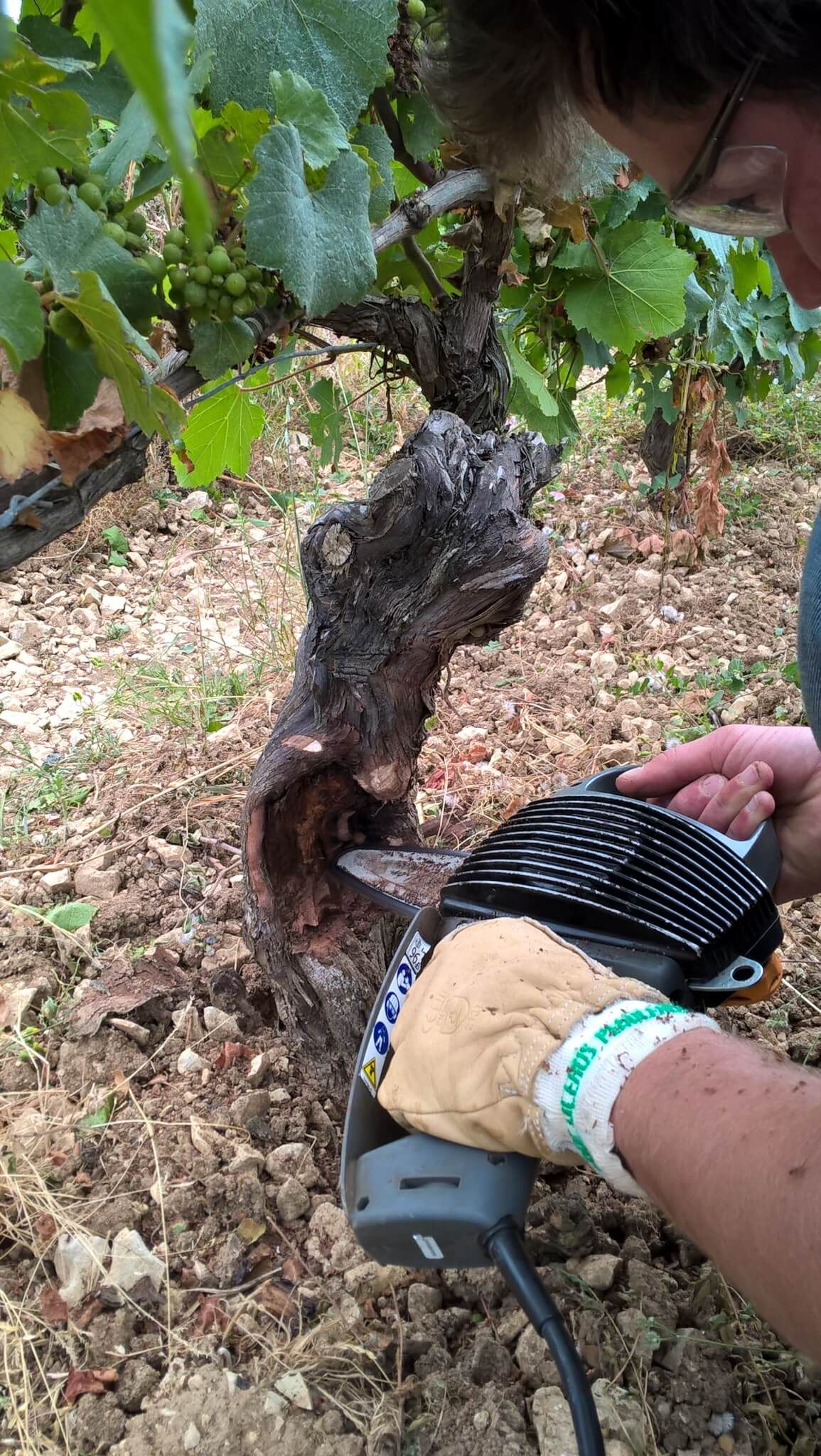Grapevine trunk diseases, such as esca, have become a scourge for vineyards. They cause accelerated vine decline and can lead to up to 5% mortality per year in certain plots. Faced with this alarming situation, the wine industry is mobilizing to effectively counter these fungal attacks that threaten the long-term sustainability of vineyards.
Among the solutions being implemented, one technique has been regaining interest in recent years: vine trunk scraping.

Vine affected by Esca – wood disease
What is vine trunk scraping?
Scraping is a curative method used to combat grapevine trunk diseases, particularly esca. The technique involves manually treating an affected vine stock with a small portable chainsaw.
The objective? To open the trunk and remove the parts of wood infected by the fungus, known as amadou. These diseased areas are easy to recognize: they display an orange color and a spongy texture.
This practice can be compared to a dentist’s intervention: cleaning out a cavity in depth to save the tooth… or in this case, to save the vine.
Why resort to vine trunk scraping?
When a vine shows symptoms of esca (tiger-striped leaves, premature drying, general weakening), scraping makes it possible to:
-
slow down or even stop the progression of the disease
-
extend the productive life of the vine
-
save the current year’s harvest if the intervention is carried out in time
-
avoid replanting, which is often long and costly
Once the vine has been scraped, it is common to see a return to full vitality as early as the following year, with normal grape production.
A remedy against vineyard decline
Vineyard decline is now a major issue. The causes of trunk disease development are multifactorial:
-
sensitive grape varieties
-
poor-quality grafting
-
water or heat stress
-
unsuitable training systems
-
pruning defects
-
early onset of production…
In this context, scraping appears to be an effective solution, though manual and time-consuming. On average, an experienced worker can treat about 80 vines per day, depending on conditions.
A cost to put into perspective
Scraping is labor-intensive, but its long-term economic impact is positive:
-
A dead vine requires replanting, followed by several years (often more than 5) before becoming fully productive again.
-
Replacing vines also involves planting costs, protection, and additional maintenance.
-
By comparison, scraping preserves the vigor of the existing vine stock, avoiding disruption in production.
A practice within a broader strategy
Scraping should not be seen as a miracle or stand-alone solution. It is part of a broader agroecological strategy aimed at:
-
improving pruning practices that respect sap flow
-
choosing grape varieties and rootstocks less sensitive to trunk diseases
-
adapting planting and training conditions
-
carefully monitoring symptoms from their first appearance
In some cases, the vine is too severely infected to be scraped. Regrafting may then be considered as an alternative.
In summary: the benefits of scraping
| Advantages of scraping | Description |
|---|---|
| Curative technique | Removes contaminated tissues and saves the vine |
| Restores vitality | The vine can produce normally the following year |
| Reduces replanting | Fewer vines to replace, medium-term savings |
| Saves the harvest | The vine can produce in the very year of scraping |
| Manual alternative | Can be used even in the absence of chemical solutions |



